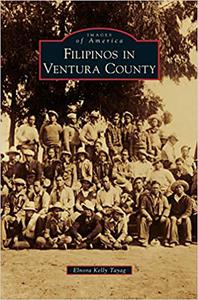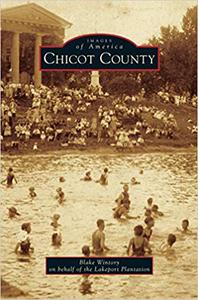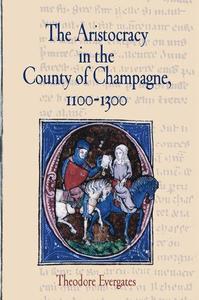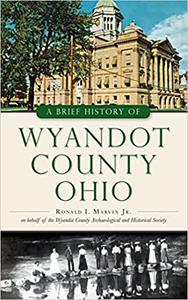

E-Books → Kingdom, Civitas, and County The Evolution of Territorial Identity in the English Landscape
Published by: voska89 on 25-03-2023, 22:45 |  0
0

Free Download Kingdom, Civitas, and County: The Evolution of Territorial Identity in the English Landscape By Stephen Rippon
2018 | 464 Pages | ISBN: 0198759371 | PDF | 133 MB
This book explores the development of territorial identity in the late prehistoric, Roman, and early medieval periods.Over the course of the Iron Age, a series of marked regional variations in material culture and landscape character emerged across eastern England that reflect the development of discrete zones of social and economic interaction. The boundaries between these zones appear to have run through sparselysettled areas of the landscape on high ground, and corresponded to a series of kingdoms that emerged during the Late Iron Age. In eastern England at least, these pre-Roman socio-economic territories appear to have survived throughout the Roman period despite a trend towards cultural homogenizationbrought about by Romanization. Although there is no direct evidence for the relationship between these socio-economic zones and the Roman administrative territories known as civitates, they probably corresponded very closely.The fifth century saw some Anglo-Saxon immigration but whereas in East Anglia these communities spread out across much of the landscape, in the Northern Thames Basin they appear to have been restricted to certain coastal and estuarine districts. The remaining areas continued to be occupied by asubstantial native British population, including much of the East Saxon kingdom (very little of which appears to have been 'Saxon'). By the sixth century a series of regionally distinct identities - that can be regarded as separate ethnic groups - had developed which corresponded very closely tothose that had emerged during the late prehistoric and Roman periods. These ancient regional identities survived through to the Viking incursions, whereafter they were swept away following the English re-conquest and replaced with the counties with which we are familiar today.
E-Books → Filipinos in Ventura County
Published by: voska89 on 28-02-2023, 22:23 |  0
0

Free Download Elnora Kelly Tayag, "Filipinos in Ventura County"
English | ISBN: 1531649254 | 2011 | 130 pages | EPUB | 41 MB
Filipino immigrants came to Ventura County in the 1920s, beginning American lives mostly as farm laborers in work camps, notably the Arneill Ranch and Springville Ranch in Camarillo. They organized early societies like the Filipino Brotherhood Association of Ventura County, the Jordan Lodge 604 Legionarios del Trabajo, the Caballeros de Dimas Alang, the Filipino Optimist Club, and the Filipino Community of Ventura County. During World War II, Filipinos served in the 1st and 2nd Filipino Infantry Regiments of the U.S. Army. The omnipresence of the U.S. Navy in coastal Ventura prodded many second- and third-generation Filipinos to serve their country in Korea, Vietnam, Desert Storm, and the Persian Gulf. Today the same spirit of community engagement is illustrated in the 26 local Filipino organizations all under the umbrella of the Filipino American Council, which celebrates history, community, and culture.
E-Books → Chicot County
Published by: voska89 on 28-02-2023, 21:53 |  0
0

Free Download Blake Wintory, "Chicot County"
English | ISBN: 1531671217 | 2015 | 130 pages | EPUB | 21 MB
Chicot County, situated along the Mississippi River, was created in 1823. In the 16th and 17th centuries, Europeans like Frenchman Rene-Robert Cavelier, Sieur de La Salle visited the region. With the French influence, the area came to be known as Chicot for the "snags" and "stumps" that populated the swampy bottomlands of the Mississippi River. Beginning in the 1830s, slave-based agriculture dominated the county's economy. By 1860, it was filled with prosperous cotton producers; many plantations were concentrated near the Mississippi River. The county's three principal towns-Dermott (1890), Lake Village (1898), and Eudora (1904)-incorporated as the county began to modernize. Local merchants flourished in the early decades of the 20th century, and Lake Village, situated on Lake Chicot, attracted many tourists. More recently, the county has suffered population loss and struggled economically, but agriculture still thrives, and the county's proud traditions continue.
Movies → Macon County Line 1974 1080p BluRay x265-RARBG
Published by: Emperor2011 on 19-02-2023, 12:08 |  0
0

Macon County Line 1974 1080p BluRay x265-RARBG
A vengeful Southern sheriff is out for blood after his wife is brutally killed by a pair of drifters. Low-budget film set in Georgia in 1953 and based on fact.
Language: English
1.38 GB | 01:28:17 | 2000 Kbps | hev1 | 1920x1036 | mp4a-40-2, 48 Khz, 2 channels
Genre: Action | Drama | Romance
Cast: Alan Vint, Cheryl Waters, Max Baer Jr.
iMDB info
E-Books → Gwinnett County, Georgia, and the Transformation of the American South, 1818-2018
Published by: voska89 on 14-02-2023, 22:40 |  0
0

Gwinnett County, Georgia, and the Transformation of the American South, 1818-2018
by Matthew Hild, Michael Gagnon
English | 2022 | ISBN: 0820362107 | 268 Pages | True ePUB | 4.06 MB
E-Books → Seneca County and the Civil War
Published by: voska89 on 12-02-2023, 01:53 |  0
0

Walter Gable, "Seneca County and the Civil War "
English | ISBN: 1626196338 | 2014 | 192 pages | EPUB | 9 MB
Though hundreds of miles away from the death and destruction of the battlefield, Seneca County, New York, contributed more than its share for the preservation of the Union. Many brave men left home to fight, suffering hardships and casualties. John Hoster was captured in 1864 and held at the infamous Andersonville prison camp, and his journal has provided invaluable insight into what soldiers held there endured. At home, Seneca farmers fed Lincoln's hungry army, and the legend of the Scythe Tree is a reminder of those who never returned from battle. After the war, Waterloo's celebration in remembrance of fallen soldiers was mimicked around the country, and Waterloo is recognized as the official birthplace of Memorial Day. Local historian Walter Gable recounts the remarkable story of Seneca County during the Civil War.
E-Books → A Taste of Prince Edward County A Guide to the People, Places & Food of Ontario's Favourite Getaway
Published by: voska89 on 10-02-2023, 23:05 |  0
0

Chris Johns, "A Taste of Prince Edward County: A Guide to the People, Places & Food of Ontario's Favourite Getaway"
English | 2018 | ISBN: 0147530687 | EPUB | pages: 264 | 306.4 mb
Explore Prince Edward County, its rich local history, gorgeous scenery, and delicious food and drink, in this new guide to the "gastronomic capital of Ontario" (The Globe and Mail).
E-Books → The Aristocracy in the County of Champagne, 1100-1300
Published by: voska89 on 4-01-2023, 02:50 |  0
0

The Aristocracy in the County of Champagne, 1100-1300 By Theodore Evergates
2007 | 424 Pages | ISBN: 0812240197 | PDF | 15 MB
Theodore Evergates provides the first systematic analysis of the aristocracy in the county of Champagne under the independent counts. He argues that three factors - the rise of the comital state, fiefholding, and the conjugal family - were critical to shaping a loose assortment of baronial and knightly families into an aristocracy with shared customs, institutions, and identity. Evergates mines the rich, varied, and in some respects unique collection of source materials from Champagne to provide a dynamic picture of a medieval aristocracy and its evolving symbiotic relationship with the counts.Count Henry the Liberal (1152-81) began the process of transforming a quasi-independent baronage accustomed to collegial governance into an elite of landholding families subordinate to the count and his officials. By the time Countess Jeanne married the future King Philip IV of France in 1284, the fiefholding families of Champagne had become a distinct provincial nobility. Throughout, it was the conjugal community, rather than primogeniture or patrilineage, that remained the core familial institution determining the customs regarding community property, dowry, dower, and partible inheritance. Those customs guaranteed that every lineage would survive, but frequently through a younger son or daughter. The life courses of women and men, influenced not only by social norms but also by individual choice and circumstance, were equally unpredictable. Evergates concludes that imposed models of "the aristocratic family" fail to capture the diversity of individual lives and lineages within one of the more vibrant principalities of medieval France.
E-Books → The Celebrated Jumping Frog of Caleveras County by Mark Twain
Published by: voska89 on 31-12-2022, 23:45 |  0
0

The Celebrated Jumping Frog of Caleveras County by Mark Twain
English | MP3@192 kbps | 16 min | 22.5 MB
Leonidas W. Smiley would bet on anything. Horse races, dog fights, cat fights, chicken fights - all were fair game to the gambling nature of Smiley. But he meets his match when a stranger comes into town, and puts his champion jumping frog to the test.
E-Books → A Brief History of Wyandot County, Ohio
Published by: voska89 on 29-12-2022, 13:52 |  0
0

Ronald I Marvin Jr, "A Brief History of Wyandot County, Ohio"
English | ISBN: 1540202178 | 2015 | 162 pages | EPUB | 8 MB
Once home to the powerful Wyandotte Nation, Wyandot County emerged from lands surrounding the Grand Reserve. The landscape has evolved dramatically, from the backbreaking work of draining marshland to the creation of solar farms centuries later. The Mission Church, Indian Mill and Colonel Crawford Monument link the county to its rich heritage, and the Lincoln Highway connects it with the rest of the nation. The county has played host to General William Harrison, President Rutherford Hayes, Charles Dickens, Medal of Honor recipient Cyrus Sears and Neil Armstrong. Author Ronald I. Marvin Jr. explores several thousand years of Wyandot history from its earliest inhabitants to the set of the Shawshank Redemption.



